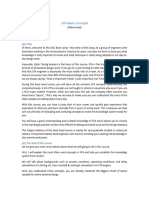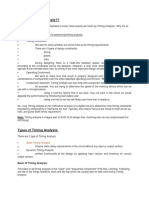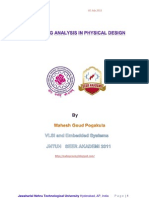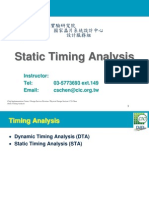0% found this document useful (0 votes)
35 views1 pageStatic Timing Analysis Overview
Static timing analysis (STA) is a method used to validate the timing performance of a design by analyzing all possible paths for timing violations. It is faster and more thorough than dynamic simulation as it checks all timing paths without needing to simulate logical operations, but it only assesses timing and not functionality. STA calculates signal propagation delays and checks for violations of timing constraints within the design and at the input/output interface.
Uploaded by
kalyansai185Copyright
© © All Rights Reserved
We take content rights seriously. If you suspect this is your content, claim it here.
Available Formats
Download as DOCX, PDF, TXT or read online on Scribd
0% found this document useful (0 votes)
35 views1 pageStatic Timing Analysis Overview
Static timing analysis (STA) is a method used to validate the timing performance of a design by analyzing all possible paths for timing violations. It is faster and more thorough than dynamic simulation as it checks all timing paths without needing to simulate logical operations, but it only assesses timing and not functionality. STA calculates signal propagation delays and checks for violations of timing constraints within the design and at the input/output interface.
Uploaded by
kalyansai185Copyright
© © All Rights Reserved
We take content rights seriously. If you suspect this is your content, claim it here.
Available Formats
Download as DOCX, PDF, TXT or read online on Scribd
/ 1

















































